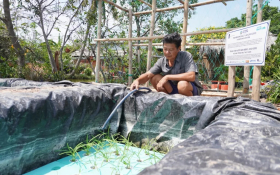Dutch Water Innovation Awards 2014 for plastic lock door, cellulose recovery, rainwater storage and poop factory
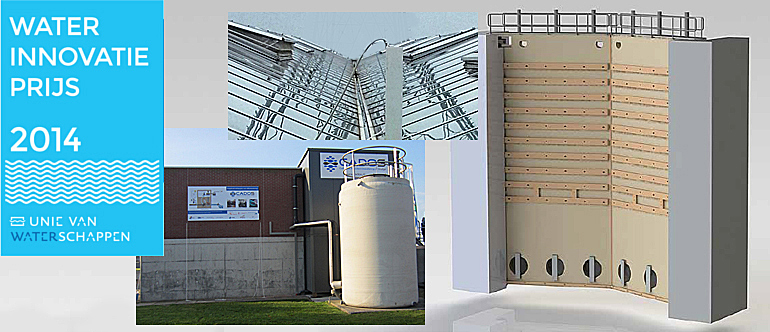 The four winners of the 2014 edition of the Dutch Water Innovation Awards are FiberCore with world's largest composite lock gate, the Cados consortium with a new technique to recover cellulose from municipal waste water, Royal HaskoningDHV with a rainwater storage system on greenhouse roofs and water board Hollands Noorderkwartier with a learning module The Poop Factory.
The four winners of the 2014 edition of the Dutch Water Innovation Awards are FiberCore with world's largest composite lock gate, the Cados consortium with a new technique to recover cellulose from municipal waste water, Royal HaskoningDHV with a rainwater storage system on greenhouse roofs and water board Hollands Noorderkwartier with a learning module The Poop Factory.
The award ceremony took place in Maarssen, the Netherlands on 2 December 2014.
Four winning categories
The Association of Dutch Water Boards (UvW) annually awards innovative projects that are applicable within the duties of the water boards.
This year an expert jury selected four winners from 135 entries, in the categories of: dry feet, adequate water, clean water and space for innovation.
Practical simplicity
President of the jury Annemieke Nijhof, CEO of Tauw Group: "All entries contribute in their own way to the water management in the Netherlands and respond to relevant issues in the water sector. Some entries are interesting because of their practical simplicity and other projects jump right out because of their wide applicability. "
Winners in four categories
Dry Feet 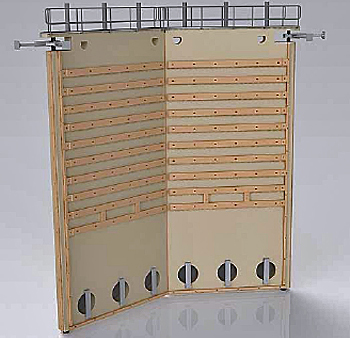 ● Fiber-reinforced plastic lock gates
● Fiber-reinforced plastic lock gates
by FiberCore:
a very strong, lightweight plastic fabric InfraCore-Inside developed by FiberCore.
InfraCore-Inside is specially developed for the civil sector.
The composite will be used to construct the world's largest fiber-reinforced plastic (FRP) lock gates to be installed in a lock near Tilburg, the Netherlands.
FiberCore's own engineering office designed the gate doors in 3D in BIM. The doors will be 13 meters high and 10.50 meters wide.
The production of the doors commenced in mid-2014 and they will be installed by the construction consortium Heijmans-Boskalis by mid-2015.
Adequate water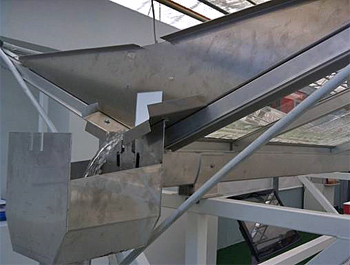 ● Rainwater-storing rooftop greenhouse
● Rainwater-storing rooftop greenhouse
by Royal HaskoningDHV:
a simple system of baffles in gutters for handling rainwater on the typical V-shaped rooftop of greenhouses.
The baffle in the gutter between two sections is 20 cm high. For the controlled release of the rainwater the baffle has a small bottom outlet.
The roof can hold back rainwater for several hours, preventing peak flows to cause local flooding or limiting the water storage capacity. Following field trails in 2013 the system is already in use.
The system has been developed by Royal HaskoningDHV, in cooperation with research institute TNO, water board Delfland, municipal Westland, province Zuid-Holland and Rabobank Westland.
Clean water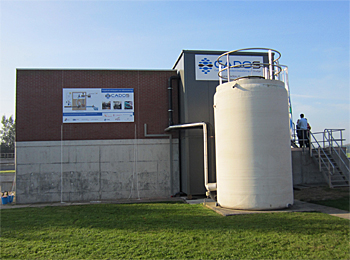 ● Recovery of cellulose from municipal waste water
● Recovery of cellulose from municipal waste water
by CADoS consortium:
a water treatment technology to separate cellulose fibers from toilet paper with a fine sieve at a waste water treatment plant, and use it as a filter medium for dewatering the sludge.
The six consortium partners - Brightwork, water board Noorderzijlvest, water board Fryslan, University Groningen, Attero and Centre of Expertise Watertechnology - are testing the Cellulose Assisted Dewatering of Sludge (CADoS) technology in a demo plant at wwtp Ulrum, the Netherlands.
Space for innovation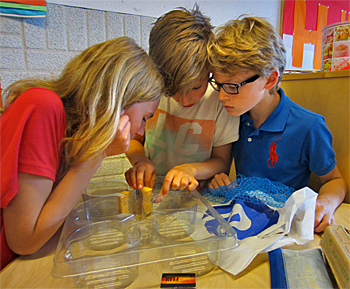 ● The poop factory
● The poop factory
by foundation Tijdgeest:
a learning module with a website, a video and a LAB-box to challenge school kids to design their own ideal wastewater treatment process.
The module has been developed by foundation Tijdgeest, in cooperation with water board Hollands Noorderkwartier and water supply company PWN.
Early 2015 six primary schools will use the module for the first time.
All winners of the four Dutch Water Innovation Awards 2014.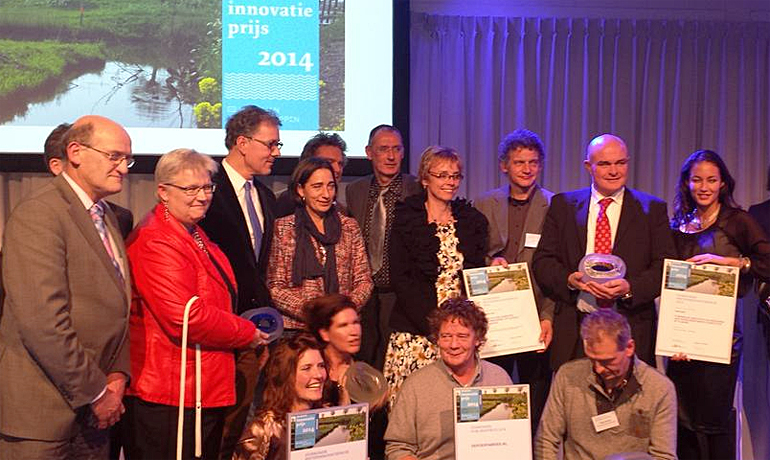
This news item is based on a press release published on the website of Waterinnovatieprijs (Dutch only).
Also read on this website
● Dutch Water Innovation Awards 2013 spotlights ingenious solutions for flood protection and clean water
More information
www.waterinnovatieprijs.nl
The video used for the learning module The Poop Factory, featuring the virtual teacher Dr. George Zoutberg.


